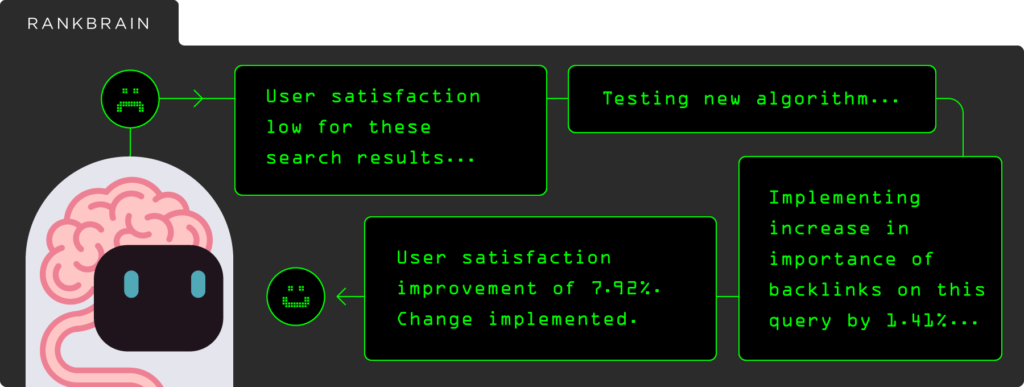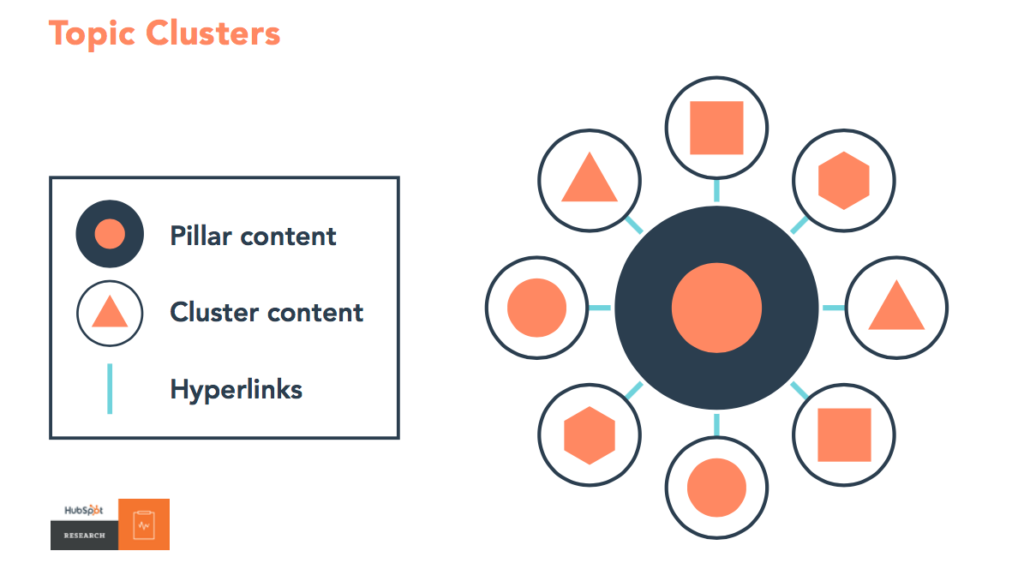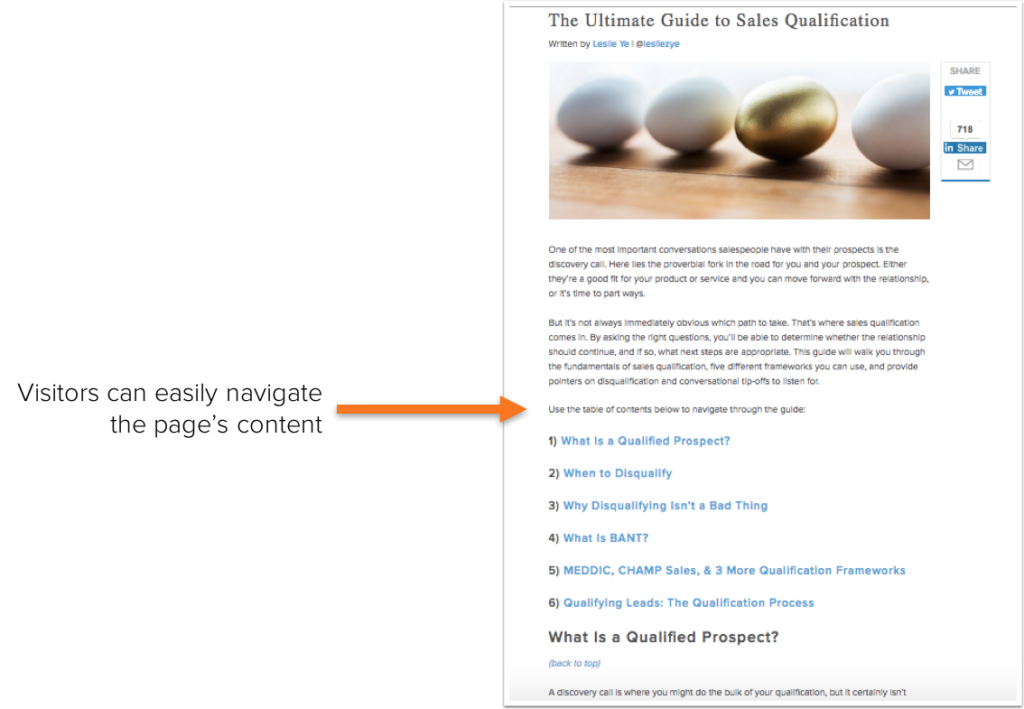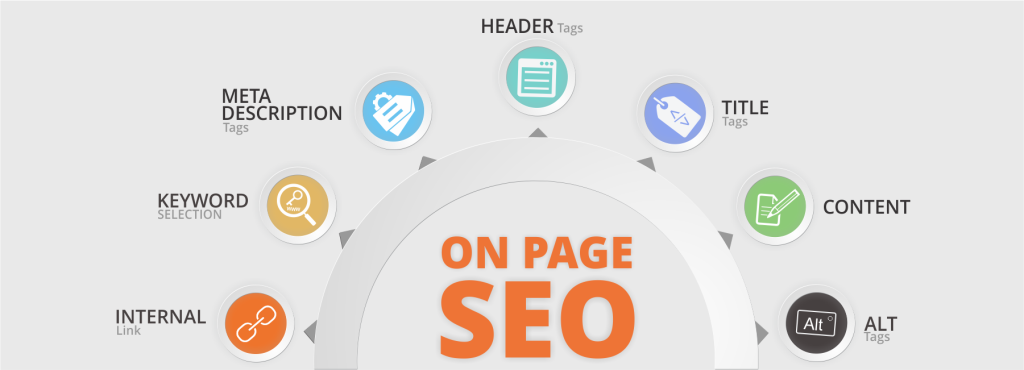
Have you noticed this: When you search for a keyword on Google with your regular browser, you get one set of results. When you type the same keyword into Google on an incognito window, you may get a different set of results. What’s going on? Google’s deep learning AI algorithm, RankBrain, is likely to be the reason.
When RankBrain launched in 2015, it stirred up quite a frenzy in the SEO world by shifting the focus from keyword to a much more complex set of ranking signals.
What exactly is RankBrain, how does it determine SERP ranking, and how can you get found in this brave new world of AI-driven SEO?
RankBrain In a Nutshell
Driven by AI and machine learning, the RankBrain algorithm allows Google to adapt to the evolving consumer behaviors by taking searchers’ expectations and context into account when displaying search results.

As users are getting comfortable with inputting complex queries into a search box or using voice searches, which tend to be more specific than a few keywords, they also expect the search results to be more relevant and accurate.
The personalization of SERP means Google takes into account a user’s location, search history, favorite websites, search intent, and the links that other users click on for a similar query when displaying search results.
The shift in focus from keywords to context and relevancy means you need more than a keyword strategy to rank high on SERPs.
Your website needs to be set up in a way for Google to crawl, understand, and index the content. The creation of topic clusters can do just that.
Why Topic Clusters Can Improve Your SEO Ranking
A topic cluster model consists of a “pillar” page that acts as the main hub for an overarching topic. The pillar page contains links to multiple content pages with in-depth information on subtopics related to the main topic.

This model helps position your content in a way that signals relevancy to search engines and improve your ranking:
Internal Linking for RankBrain
HubSpot found that websites with greater numbers of internal links got better placements in SERPs after the RankBrain update. Sites with a lot of internal links also got more impressions.
These internal links establish relationships among the content pieces, helping Google understand the hierarchy and structure of your website so it can index the information.
In addition, internal linking used in topic clusters has a “rising tide lifts all boats” effect – if one piece of content ranks well, other pages linked to it will see an improvement in their SEO ranking as well.

Website Architecture
The use of topic cluster naturally translates into better-organized information and a website architecture that’s search engine friendly.
Well-established information architecture gives Google the context to understand the hierarchy and relevance of the content on your site.
The linguistic grouping aids in semantic search so search engines can identify relevant information based on users’ search terms and search intent.
A well-structured website is also user-friendly, making it easy for visitors to find the information they need. Their interactions with your content in turn signal relevancy to search engines.
Conversational Language
As more people are using voice search [ Link to the voice search article delivered recently but not yet posted ] or inputting their queries in a conversational manner (e.g., by typing in a question,) topic clusters offer the opportunity to phrase the anchor links in a way that matches the language your ideal audience use in their searches.
By positioning your content in a way that answers your ideal audience’s questions, you’ll not only improve your SEO ranking but also drive high-quality traffic to your website.
UX Signals
RankBrain considers user experience (UX) signals to gauge how satisfied and engaged visitors are with the content on a website.
Some of these signals include organic click-through rate, dwell time, bounce rate, and page view per session.
Keep in mind that a high bounce rate may not be a bad signal if it’s coupled with high dwell time. It could simply mean that visitors are finding everything they need on a page and spending time to engage with the content.
The use of topic clusters helps organize the information on your website in a way that delivers a better user experience and helps your ranking as SEO and UX best practices converge. [ Note: or link to the UX/SEO article delivered recently but not yet posted. ]
How To Create Topic Clusters For SEO
Creating topic clusters can be quite an undertaking thanks to the large amount of content required, so make sure you have a plan in place to maximize your ROI:
1. Identify Your Main Topic
First, decide on the umbrella topic you want to be known for so you can position yourself as the subject matter expert.
This topic should help frame your products and services as the solution to your ideal audience’s challenges while giving you the opportunity to rank high in SERPs (e.g., ranking for less competitive keywords.)
In addition, you can identify “content gap” – keywords or phrases that your competitors are ranking for and driving traffic with but you aren’t – to help narrow down your topic.
Other ways to inform the selection of a topic include:
- Audit your assets to identify a topic for which you can leverage or reposition existing content to bridge content gaps.
- Target keywords with high commercial intent to attract visitors that are most likely to convert.
- Find “low hanging fruit” such as long-tail keywords for which you can rank high on SERPs.
2. Map Out the Sub-topics
Each subtopic represents a piece of content that you’ll create to cover the main topic in details.
These subtopics should speak to the pain points, challenges, and desired outcomes of your buyer persona.
Involve your customer support team and sales team in the brainstorming process as they interact with your customers every day and have unique insights into how your ideal customers talk about their needs and challenges.
In addition, you can identify the questions that your ideal audience asks frequently by researching on sites such as Quora or Yahoo Answers.
Pay attention to how they talk about their challenges and phrase their questions so you can use the insights to inform the titles of the content pieces for your subtopics.
3. Create Your Pillar Page
You’ll be driving traffic to the pillar pages so they’ll be the focus of your SEO efforts.
Although keywords are no longer the be-all-end-all in SEO strategies, doing keyword research (especially medium- or long-tail keywords) can give you valuable insights into what your target audience is searching for and therefore, what keywords your pillar page should rank for.
In addition, don’t forget on-page SEO for the pillar page, such as:
- Including the keywords in the page URL and page title (H1 tag.)
- Getting the page ranked for “featured snippets” on Google’s search results by including a definition of the topic.
- Using H2 tags to highlight the subtopics. Establish the relationships between the content and the key topic to help search engines understand the information.
- Adding internal and external links to signal relevance to search engines.

4. Develop a Content Calendar
It’s probably going to take a few months to develop all the content for the subtopics and build out the pillar page.
Incorporate this effort into your content marketing strategy and production calendar so you can also use the content pieces to drive traffic and build brand awareness.
Make sure you’re linking all the related pages in a logical order to demonstrate the content’s semantic relationship to search engines.
In addition, make it a habit to revisit your existing pillar pages and subtopic content periodically to ensure that they’re up-to-date. Don’t forget to include links to new pages and keep the content evergreen by adding timely and relevant information.
Conclusion
Content marketing is a long game and SEO evolves in response to users’ behaviors and expectations.
In order to stay ahead in the SEO game, you need to monitor the performance of your pillar pages and subtopic content pages so you can respond to changes in either consumer behaviors or search engine algorithms.
If staying on top of SEO sounds like a moving target… you’re right!
Being able to pull the right levers can save you a lot of time and resources when it comes to SEO. Getting to the top positions on SERPs is a virtuous cycle – the higher you rank, the more people will click on your link, and if you offer great content then you will further improve your ranking!
That’s why more and more businesses are leveraging the experience of SEO experts to help them get it done right, the first time.
Get a free (instant) SEO audit now to see how your website is measuring up.

